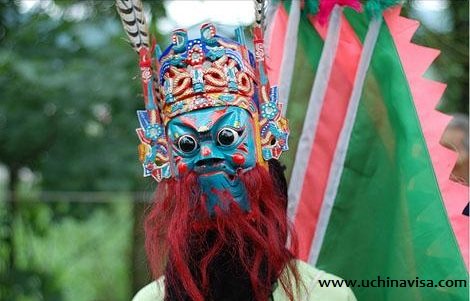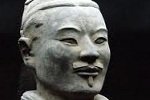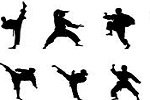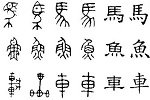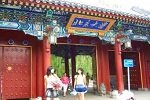Home ![]() Chinese Culture
Chinese Culture ![]() Chinese Masks
Chinese Masks
Chinese Masks
When Chinese masks are mentioned, people often think about the Beijing Opera masks. Actually, the Beijing Opera masks are just one kind of the various masks in China.
Masks have been used by almost every ethnic group in China since ancient times in sacrificial rituals, or as a way to communicate with gods and spirits. People have created numerous totems and divinities and prayed to them for their power to overcome natural disasters and ward off diseases.
As a multi-ethnic and multi-cultural country with long history, China has many unique mask customs. According to their functions, Chinese masks can be divided into the following major categories:
- Exorcising masks
- Tibetan masks
- Sorcerers' masks
- Shamanic masks
- Dramatic masks
With time going by, the worshiping nature of the masks has been gradually watered down. People now focus more on their artistic and entertainment qualities. They are now considered more like a collector's treaure.
Exorcising Masks
Exorcising masks originated in the Central Plains of China. They were used in ancient sacrificial rituals that were initially held to drive away ghosts and evil spirits.
As time went by, part of the rituals were evolved into local operas and became popular among the army troops because they normally served to praise the military deeds and high-ranking officers.
About 1,000 years ago, exorcising masks were combined with the totem worshiping among the ethnic minority groups in the lower reaches of the Yangtze River. Together, they formed a rich mask culture.
Today, the exorcising masks are popular in some ethnic minorities, including the following: Miao, Tujia, Yao, Zhuang, Dong, Shui, Buyi and Maonan etc.
Chinese Masks: Tibetan Masks
Tibetan masks are usually displayed in temples, or worn in major festivals. They are also used by folk sorcerers and in Tibetan operas.
They use abstract symbols and metaphors to give each character a unique personality. Also, specific colors are usually used for certain roles, reflecting the special Tibetan aesthetic experience.
Sorcerer's Masks of Yunnan and Guizhou

Sorcerer's masks of Yunnan and Guizhou are masks worn by a group of people during ceremonies that welcome gods or spirits, and in praying rituals for better future as well as at funeral rituals to ensure that the departing souls will rest.
These masks are developed from the totem worshiping and sorcerers' sacrificial rituals. They are usually made with white poplar tree or willow wood, which are lightweight and auspicious in their beliefs.
Today, these masks are used in the following ethnic groups: Jinuo, Jingpo, Buyi, Wa, Bai, Dai and the Zhuang of Yunnan Province.
Shamanic Masks
Shamanic masks are derived from the totem worshipping of ethnic minorities in north China and the shamanic culture. They have been used in exorcising and funerals. Currently, the Mongolian, Man, Ewenki and Hezhen etc. ethnic groups are using these masks.
Dramatic Masks

Dramatic masks have been used on the stages of ethnic operas in China. Today these masks are seen in Tibetan operas, Sichuan, Gansu, Qinghai, Guizhou (such as the Tujia and Lao ethnic exorcising operas) and Hunan (such as the Ground Opera and the Dong ethnic leaping drama) etc.
Home ![]() Chinese Culture
Chinese Culture ![]() Chinese Masks
Chinese Masks

New York Pass With More than 50 Sttractions

Southern California CityPASS saves you 32% for Disneyland, Universal Studios and 3 other attractions
